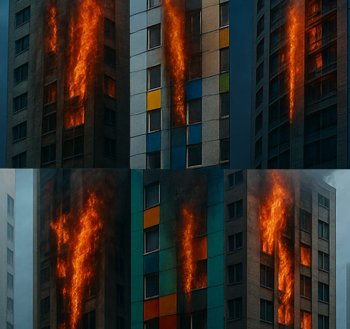Heating degree days
Heating degree days (HDD) are used to give an indication of the effect of outside air temperature on building energy consumption during a specified period of time. They represent the number of degrees and number of days that the outside air temperature at a specific location is lower than a specified base temperature (or balance point). This gives an indication of how much heating will be required in the building.
The base temperature of a building is the temperature below which it needs heating, which will depend on the building type and use.
So for example, if the base temperature of a building is 21 degrees, and the outside air temperature is 12 degrees for eight hours (one third of a day), then that represents 3 heating degree days ((21-12) x 1/3 = 3).
Adding up heating degree days can give a weekly, monthly or annual figure.
Heating degree days calculated for locations with publicly available meteorological data and so it is necessary to locate an accurate weather station, with good historical data close to the site being investigated, or in circumstances similar to the site being investigated. Weather station data such as that available from airports is often considered to be the highest quality.
Websites such as Degree Days Net can be used to calculate heating degree days for a given location and base temperature.
Data is also available to allow calculation of ‘cooling degree days’ representing the number of degrees and days the outside temperature is above the base temperature and ‘growing degree days’, based on the temperature range within which plants will grow.
Heating and cooling degree days can be used to help assess or compare different potential sites for development. They can also be used as a way of normalising weather between different sites, allowing comparison of the performance of different buildings, or for normalising weather between different years to assess changes in the performance of a building.
However, despite being a very simple concept, they are difficult to use effectively in practice, and do not always provide an effective way of influencing design decisions.
There can be difficulty separating out heating and cooling energy consumption from overall energy consumption, and heating and cooling requirements are influenced by other factors such as; other heat sources (including people, lighting, equipment and solar gain), thermal mass, thermal insulation and so on. In addition, heating and cooling inputs tend to be intermittent rather than continuous, and buildings are not necessarily always occupied.
It is possible to take account of these matters in calculations and through the use of sub-metering, but this can become a very complicated process, based on a deceptively simple indicator. The use of degree days should therefore be treated with caution, employed as part of a broader process of analysis and assessment providing only a general indicator for order of magnitude assessments rather than accurate detailed comparisons.
[edit] Find out more
[edit] Related articles on Designing Buildings Wiki
- Cooling degree days.
- Comfort in low energy buildings.
- Computational fluid dynamics.
- Energy targets.
- Heat stress.
- Passive building design.
- Post occupancy evaluation.
- Solar gain.
- Temperature.
- Thermal comfort.
- Thermal indices.
- Urban heat island effect.
[edit] External references
- Degree Days Net.
- Energy Lens, Degree Days – Handle with care.
Featured articles and news
Government consultations for the summer of 2025
A year of Labour, past and present consultations on the environment, the built environment, training and tax.
CMA competitiveness probe of major housing developers
100 million affordable housing contributions committed with further consultation published.
Homes England supports Greencore Homes
42 new build affordable sustainable homes in Oxfordshire.
Zero carbon social housing: unlocking brownfield potential
Seven ZEDpod strategies for brownfield housing success.
CIOB report; a blueprint for SDGs and the built environment
Pairing the Sustainable Development Goals with projects.
Types, tests, standards and fires relating to external cladding
Brief descriptions with an extensive list of fires for review.
Latest Build UK Building Safety Regime explainer published
Key elements in one short, now updated document.
UKGBC launch the UK Climate Resilience Roadmap
First guidance of its kind on direct climate impacts for the built environment and how it can adapt.
CLC Health, Safety and Wellbeing Strategy 2025
Launched by the Minister for Industry to look at fatalities on site, improving mental health and other issues.
One of the most impressive Victorian architects. Book review.
Common Assessment Standard now with building safety
New CAS update now includes mandatory building safety questions.
RTPI leader to become new CIOB Chief Executive Officer
Dr Victoria Hills MRTPI, FICE to take over after Caroline Gumble’s departure.
Social and affordable housing, a long term plan for delivery
The “Delivering a Decade of Renewal for Social and Affordable Housing” strategy sets out future path.
A change to adoptive architecture
Effects of global weather warming on architectural detailing, material choice and human interaction.
The proposed publicly owned and backed subsidiary of Homes England, to facilitate new homes.
How big is the problem and what can we do to mitigate the effects?
Overheating guidance and tools for building designers
A number of cool guides to help with the heat.
The UK's Modern Industrial Strategy: A 10 year plan
Previous consultation criticism, current key elements and general support with some persisting reservations.
Building Safety Regulator reforms
New roles, new staff and a new fast track service pave the way for a single construction regulator.
























